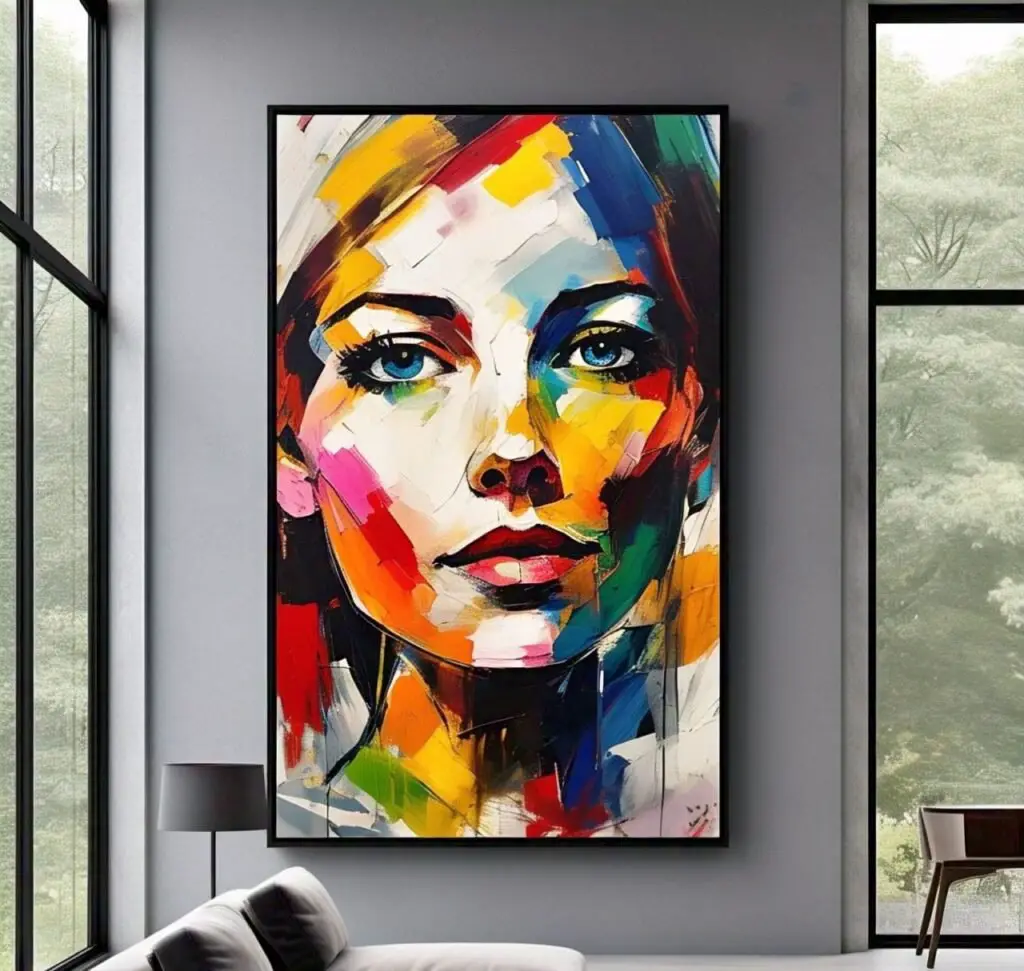Wall art is more than just decoration; it’s a way to express your personality, set the mood of a room, and create a space that feels uniquely yours. Whether you’re looking to add a pop of color, a touch of elegance, or a bold statement, wall art can completely transform your home or office. In this blog post, we’ll explore the power of wall art, how to choose the right pieces, and creative ways to incorporate it into your space. Let’s dive into the world of wall art and discover how it can elevate your interior design.
Why Wall Art Matters in Interior Design
Wall art is a crucial element in interior design because it adds depth, character, and emotion to a room. A blank wall can feel cold and unfinished, but the right piece of wall art can bring warmth and life to the space. It’s not just about filling empty walls; it’s about creating a focal point that draws the eye and sparks conversation.
When chosen thoughtfully, wall art can reflect your personal style, whether you prefer modern minimalism, rustic charm, or eclectic vibes. It’s also a great way to tie together the colors, textures, and themes of a room. From paintings and prints to sculptures and tapestries, wall art offers endless possibilities for customization.
How to Choose the Perfect Wall Art for Your Space
Selecting the right wall art can feel overwhelming with so many options available. Here are some tips to help you choose pieces that resonate with your style and complement your space:
1. Consider the Room’s Purpose
Think about the function of the room where you plan to hang the wall art. For example, a calming landscape or abstract piece might work well in a bedroom, while a vibrant, energetic artwork could be perfect for a living room or home office.
2. Match the Color Scheme
Choose wall art that complements the existing colors in your room. You don’t have to match everything perfectly, but the artwork should harmonize with the overall palette. For a cohesive look, pick up on accent colors from your furniture, rugs, or curtains.
3. Think About Size and Scale
The size of your wall art should be proportional to the wall and the surrounding furniture. A large piece can make a bold statement, while smaller pieces can be grouped together for a gallery wall effect.
4. Reflect Your Personality
Your wall art should tell a story about who you are. Whether it’s a family photo, a travel souvenir, or a piece from your favorite artist, choose something that speaks to you.
Creative Ways to Incorporate Wall Art into Your Home
Wall art doesn’t have to be limited to traditional framed paintings. Here are some creative ideas to inspire you:
1. Create a Gallery Wall
A gallery wall is a fantastic way to display multiple pieces of wall art in one area. Mix and match different sizes, styles, and frames for an eclectic look. You can include family photos, prints, and even three-dimensional objects like mirrors or clocks.
2. Use Wall Decals or Stickers
If you’re renting or want a temporary solution, wall decals are a great option. They come in a variety of designs and are easy to apply and remove without damaging the walls.
3. Experiment with Textures
Wall art isn’t just about visuals; it can also add texture to your space. Consider woven tapestries, metal sculptures, or wooden carvings for a tactile element.
4. Incorporate Functional Art
Combine form and function with wall art that serves a purpose. Floating shelves, wall-mounted planters, or decorative hooks can double as art pieces.
Types of Wall Art to Explore
The world of wall art is vast and varied. Here are some popular types to consider:
1. Paintings and Prints
Classic and timeless, paintings and prints are a go-to choice for wall art. From oil paintings to digital prints, there’s something for every taste.
2. Photography
Photographic wall art can capture stunning landscapes, candid moments, or artistic compositions. Black-and-white photos add a touch of sophistication, while colorful images bring energy to a room.
3. Text-Based Art
Words can be powerful. Text-based wall art, such as inspirational quotes or typography designs, adds a personal and motivational touch to your space.
4. Sculptures and Wall Hangings
For a three-dimensional effect, consider wall sculptures or hangings. These pieces add depth and interest to your walls.
5. DIY Wall Art
Get creative and make your own wall art. Whether it’s a painted canvas, a macramé wall hanging, or a collage of found objects, DIY art adds a unique and personal touch.

Tips for Arranging Wall Art
Once you’ve chosen your wall art, the next step is arranging it effectively. Here are some tips to help you get it right:
1. Hang at Eye Level
As a general rule, the center of your wall art should be at eye level (about 57-60 inches from the floor). This ensures it’s easily visible and creates a balanced look.
2. Use the Rule of Thirds
Divide your wall into thirds, both horizontally and vertically, and place your art at the intersections. This creates a visually pleasing arrangement.
3. Balance Symmetry and Asymmetry
Symmetrical arrangements feel orderly and formal, while asymmetrical layouts are more dynamic and modern. Choose based on the vibe you want to create.
4. Leave Some Breathing Room
Don’t overcrowd your walls. Leave some empty space around your wall art to let it shine and prevent the room from feeling cluttered.
Wall Art Trends to Watch in 2023
Wall art trends are constantly evolving. Here are some of the top trends to inspire your next decor update:
1. Nature-Inspired Art
Bring the outdoors in with wall art featuring botanical prints, landscapes, or animal motifs. This trend aligns with the growing popularity of biophilic design.
2. Bold and Abstract Designs
Abstract art continues to be a favorite for its ability to make a bold statement. Look for pieces with vibrant colors and dynamic shapes.
3. Vintage and Retro Styles
Nostalgia is in, and vintage-inspired wall art is making a comeback. Think retro posters, mid-century modern designs, and antique maps.
4. Minimalist Art
For those who prefer a clean and understated look, minimalist wall art is a great choice. Simple lines, neutral tones, and subtle textures create a calming effect.
Where to Buy Wall Art
Finding the perfect wall art is easier than ever, thanks to a wide range of online and offline options. Here are some places to start your search:
1. Online Marketplaces
Websites like Etsy, Society6, and Art.com offer a vast selection of wall art from independent artists and designers.
2. Local Art Galleries
Support local artists by purchasing wall art from galleries or art fairs in your area.
3. Home Decor Stores
Retailers like West Elm, Anthropologie, and IKEA offer stylish and affordable wall art options.
4. Thrift Stores and Flea Markets
For unique and budget-friendly finds, check out thrift stores and flea markets. You might discover hidden gems with a lot of character.
Final Thoughts: Let Wall Art Tell Your Story
Wall art is more than just a decorative element; it’s a reflection of your personality, tastes, and experiences. Whether you’re drawn to bold, colorful pieces or subtle, understated designs, the right wall art can transform your space and make it truly your own. Take your time to explore different styles, experiment with arrangements, and choose pieces that resonate with you. With a little creativity and thoughtfulness, your walls can become a canvas for self-expression and inspiration.
So, what are you waiting for? Start exploring the world of wall art today and give your space the makeover it deserves!
